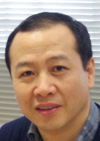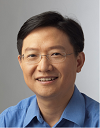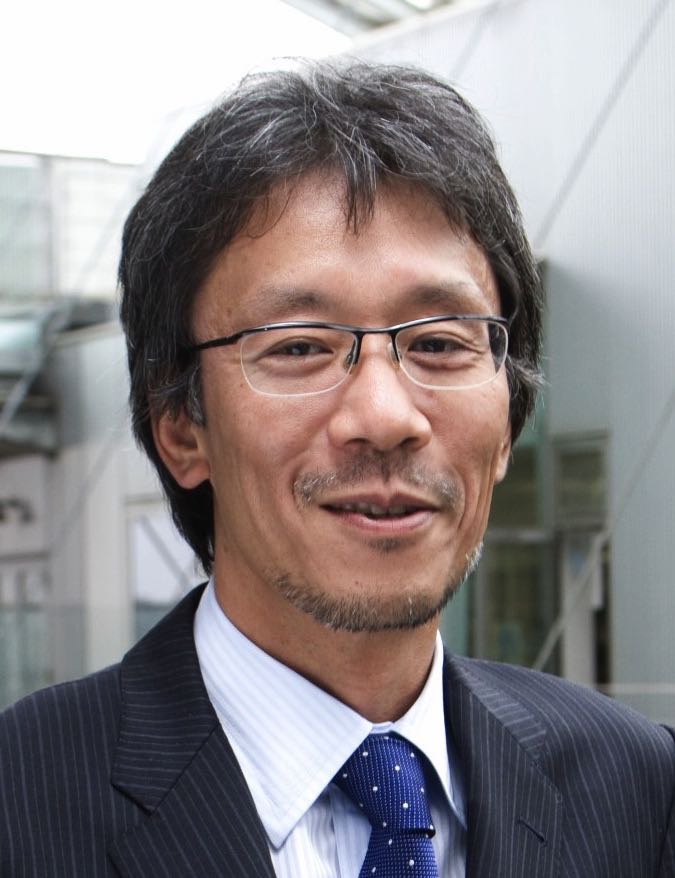|
Plenary Session |
| |
|
Chair: Zhiping Wang, Director, SIMTech Microfluidics Foundry, Singapore Institute of Manufacturing Technology |
| |
08:30 |  | Keynote Presentation Microfluidic Platforms, Microfluidic Apps and Microfluidic Foundry Services
Roland Zengerle, Professor, University of Freiburg, Germany
The talk promotes three major issues that enable to speed up Lab-on-a-Chip development and reduce time to market: i) the use of microfluidic platforms, ii) the development of Microfluidic Apps for existing lab instruments and iii) the offer of microfluidic design & foundry services. Various examples based on the use of centrifugal microfluidics platforms will be given to illustrate the impact of those issues especially for point-of-care applications. |
|
09:15 |  | Keynote Presentation Research into the Use of Optofluidics to Manipulate Light and Liquid
Ai Qun Liu, Professor, Nanyang Technological University, Singapore
There is significant research in the field of manipulation and sorting of small size particles and molecules with dimensions of tens to hundreds of nanometers in a microfluidic chip. Opto-fluidic-force aims to manipulate light and fluid at micro- and nano-scale and exploit their interaction to create highly versatile devices that have significant scientific interests in many areas. The novelties of the integrated opto-fluidic-force are two-fold. First, fluids can be used to carry substances for analysis in highly sensitive optical micro-devices. Second, fluids can also be exploited to control light, making them tunable, reconfigurable and adaptive. It is a new breakthrough research area that provides new solutions and opportunities for a wide range of traditional micro-/nano-particle and molecule sorting, manipulation and detection by using opto-fluidic-force manipulation. Also, this new innovation allows scientists and researchers to tackle many classical problems with new tools and new research ideas. In this talk, the state-of-the-art of opto-fluidic-force research is reviewed with breakthrough innovations in nano-particle and molecule sorting, manipulation and detection etc. and may lead to new applications in a single molecule sorting, maipulation and imaging. |
|
10:00 | Coffee & Networking in Exhibition Hall |
|
Session 3A |
| |
|
Chair: Aaron Ho, Professor, The Chinese University of Hong Kong |
| |
10:30 | Micro Device for Measuring Cell Function and for Tissue Engineering
Hidetoshi Kotera, Professor, Kyoto University, Japan
In the field of re-generative medicine, understanding the function of cell and tissue is key issue. To understand the cell and tissue functions, many micro devices, called Micro TAS( Total analysis systems) are proposed and used in the field of medicine and life science research.For studying the function of the pancreas islet we have developed two types of novel microfluidic device for space- and time-resolved visualization of intracellular events when a cell surface is partially exposed to external stimuli. |
11:00 | Microfluidics for Cancer Detection and Diagnosis
Chwee Teck Lim, NUS Society Chair Professor, Department of Biomedical Engineering, Institute for Health Innovation & Technology (iHealthtech), Mechanobiology Institute, National University of Singapore, Singapore
We present a suite of microfluidic biochips that are able to detect and retrieve rare viable circulating tumor cells from blood of cancer patients without using antibodies. These biochips have been commercialized and are undergoing clinical tests around the world. |
11:30 | Single Cell Genetic Testing with Integrated Sample Preparation in the Same Reaction Wells
Thomas Hai-Qing Gong, Associate Professor, Nanyang Technological University, Singapore
We developed a novel microfluidic method to integrate the entire workflow of single cell genetic analysis, including single cell capture, zero-loss nucleic
acid extraction and purification from low copy cells (1-105 cfu) in a microwell
and furthermore perform single cell real-time PCR in the same microwell. All these steps are carried out in a single well, avoiding sample loss during sample transfer. We further applied this “all-in-one-well” sample prep integrated PCR to an array of
nanoliter wells for single cells dPCR analysis. This sample prep integrated genetic testing method also has a potential to carry out dPCR using a raw sample with zero loss of nucleic acid when removing PCR inhibitors. It also has benefits of reducing the total raw sample volume to 1ul or less, and selectively removing DNA or RNA to enable high quality gene expression analysis.
|
12:00 | "PASCA's" Single Cell Manipulation Technology - A Powerful New Tool in Cancer Diagnostics and Therapeutics
Victoria McEneaney, Post Doctoral Researcher, Trinity College Dublin, Ireland
The EU funded "Platform for Advanced Single Cell Analysis - PASCA" project has developed a new Single Cell Manipulator (SCM) automated "drop on demand" instrument, capable of printing single cells within a picolitre sized droplet into spatially ordered arrays or onto a chosen substrate. This technology is a powerful new tool that will offer new insights in clinical diagnostics and therapeutics. |
12:20 | Lunch & Networking in Exhibition Hall |
13:15 | Poster Viewing Session |
|
Plenary Session |
| |
|
Chair: Noritada Kaji, Associate Professor, Nagoya University |
| |
14:00 |  | Keynote Presentation Interface Structures and Functions for Organs-on-Chip
Hanry Yu, Group Leader, Institute of Bioengineering and Nanotechnology A*STAR, Singapore
Organs are not defined only by a group of cells but also the distinct interface structures carrying out specific functions. We will discuss technologies to create, control and preserve these interface structures for Organs-on-Chip. |
|
14:45 |  | Keynote Presentation Commercialization of Microfluidic Devices for Point-of-Care Diagnostics
Vincent Linder, CTO, OPKO Diagnostics, United States of America
Microfluidics is a key component to designing devices for high-performance in-vitro diagnostics tests outside the laboratory. The presentation will focus on generally applicable design rules for such devices, and a discussion of how these rules were successfully applied to the design of the Claros1TM device. The presentation will focus on the interface between microfluidics and usability, robustness (for manufacturing), cost competitiveness and clinical performance from trials. |
|
|
Chair: Logan Liu, Assistant Professor, University of Illinois |
| |
15:30 | Coffee and Networking in Exhibition Hall |
|
Session 4A |
| |
16:00 | Nanobiodevices-Based Single Biomolecule and Single Cell Analysis for Cancer Diagnosis/Therapy and Stem Cell Therapy
Noritada Kaji, Associate Professor, Nagoya University, Japan
I will describe the development of nanobiodevices to apply to CTC detection for cancer metastasis diagnosis, nanobiodevice for single DNA sequencing, single molecular epigenetic analysis, in vivo imaging for stem cell therapy and theranostic device for cancer diagnosis/therapy. |
16:30 | Microbioreactors for Stem Cell Bioprocessing
Nicolas Szita, Professor, University College London, United Kingdom
We present a novel, autoclavable, and microfabricated scale-down device designed for regenerative medicine process development. The microfabricated device contains a re-sealable culture chamber that facilitates use of standard culture protocols, creating a link with traditional small-scale culture devices for validation and scale-up studies. An image processing algorithm was developed which permits quantification of co-cultured colony-forming cells from phase contrast microscope images.
|
17:00 | An Integrated Platform Enabling Theranostic Applications at the Point of Primary Care (TheraEDGE)
Antoni Homs i Corbera, Senior Researcher, Institute for Bioengineering of Catalonia, Spain
A commercially feasible diagnostics system, based on single use disposable LOC cartridges and their associated diagnostic device, has been prototyped. All bioassay steps have been properly integrated in a single cartridge and tested. Multiple pathogens analysis time estimation is 40 minutes. |
17:20 | Application of a Microfluidic Chip-based 3D Co-culture to Test Drug Sensitivity for Individualized Treatment of Lung Cancer
Qi Wang, professor, Dalian Medical University, China
Individualized treatment is a promising clinical strategy for lung cancer, and drug sensitivity testing is fundamental to this scheme. We aimed to develop an effective drug sensitivity test platform to support individualized treatment. |
17:40 | Close of Conference |








